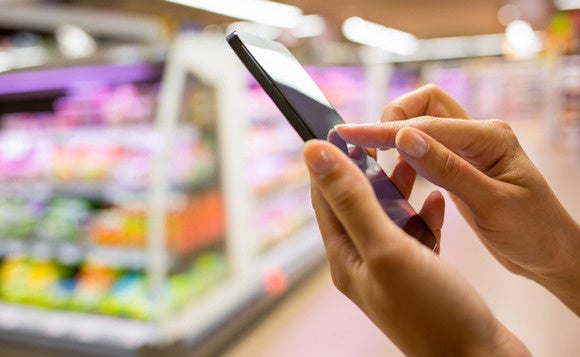How technology is changing the way we shop, forever
Shopping used to be an intimate dance between the consumer and a sales person, but increasingly it’s one that’s going the way of the waltz. A recent study revealed 58 percent of shoppers prefer to look up information on their smartphone or tablet while shopping in a store rather than speak to a store employee.
That shift speaks to the way technology has dramatically transformed the retail experience over the last several years. Apps like Amazon Price Check and BuyVia allow consumers to comparison shop on their phones while in stores—a phenomenon called“showrooming” that nearly half of Americans have participated in. Virtual dressing rooms let shoppers “try on” clothes without the hassle of standing in fitting room lines with an armful of outfits. Near-field communication apps such as Google Wallet facilitate purchases at checkout without tendering physical payment. Apple even lets shoppers walk into their stores and make a purchase without interacting with a single human being. All of these tools empower consumers to get the best deals with the least amount of work.
One of the biggest trends transforming the way we shop is the use of location-based technologies. Consumers are most familiar with this idea through mobile coupons: Apps like RetailMeNot, MobSav, and mobiQpons track the user’s location via GPS and deliver deals in the immediate area directly to their device. But another implementation is “beacon” technology offered by companies like Estimote, inMarket and even Apple. Retailers can place small sensors around their stores that track and communicate with shoppers’ mobile devices. This allows them to optimize everything, from product pricing to floor layout based on customer behavior. For example, if a retailer sees a rise in foot traffic near a display of golf clubs but no corresponding increase in sales, they can push a discount to the phone of each shopper who approaches it. If those customers start buying the clubs, the retailer knows to reduce the price to increase sales.
Consumers are embracing this kind of location-based marketing. According to studies, almost half of shoppers want to receive mobile coupons and other promotions when they are near or in stores, and 63 percent say they’re more likely to make a purchase if they receive a coupon while shopping. Retailers like it too; brick-and-mortar shops finally have a way to get the detailed customer data once only available to online stores.
Another growing trend is “reverse showrooming.” In an effort to avoid losing business to online competitors, many retailers are co-opting the principles of showrooming to drive sales back to their own physical stores and websites. Wal-Mart updated its iPhone app with an “in-store mode,” which lets customers scan product barcodes for price checks and reviews and gives them access to the latest ads and sales, which often lower in-store prices. Target, Macy’s, Best Buy, and several other popular retailers have signed on with the Shopkick app, which awards shoppers points for walking in the store and scanning products that they can trade in for gift cards. Other merchants offer deals to shoppers who “check in” to their stores on social media apps like Foursquare and Facebook.
As the push and pull between physical and online stores continues to unfold, one thing is certain: your mobile devices will be integral. So make sure you understand the risks and educate yourself in mobile security. Enterprising criminals can potentially use geolocation data to deduce where you are or are going to be, raising a range of threats from home burglary to stalking.
Limit your vulnerability to hackers by carefully vetting which apps you use, restricting location data to the apps that need it, and making sure to read and understand the terms of service for anything you download.

No comments:
Post a Comment